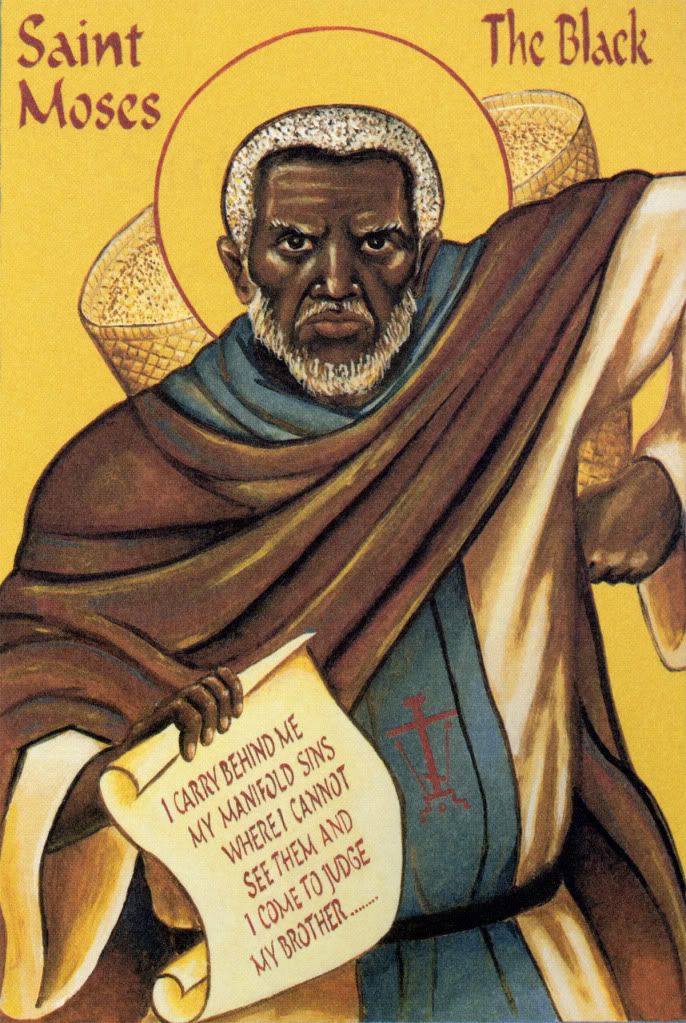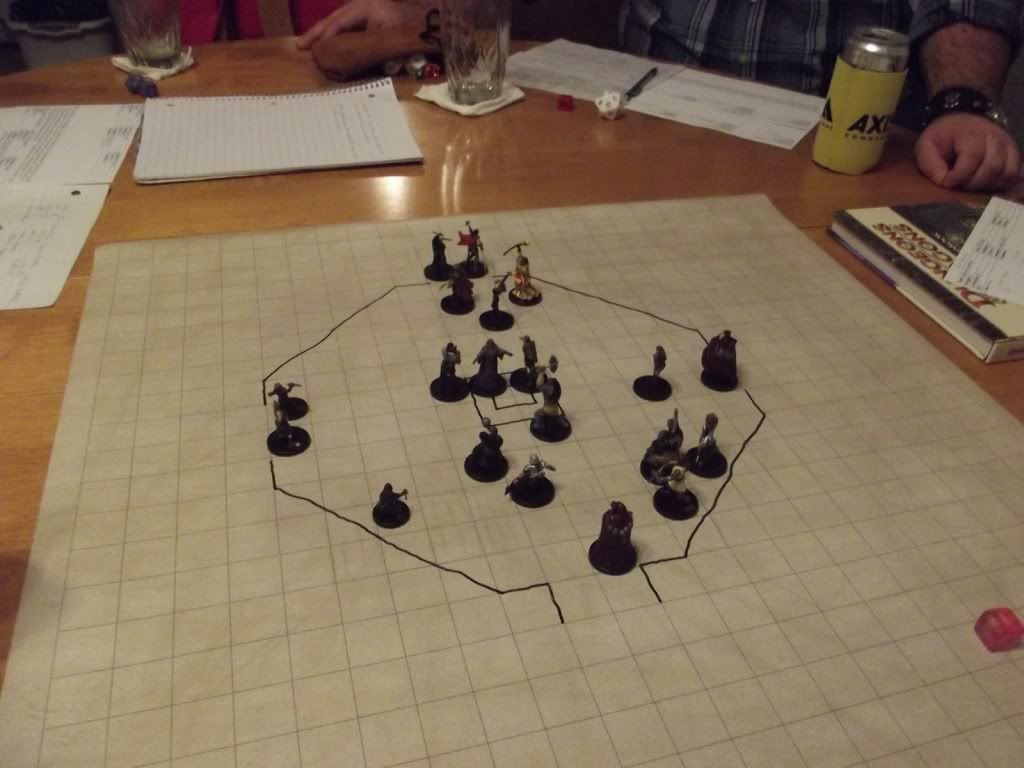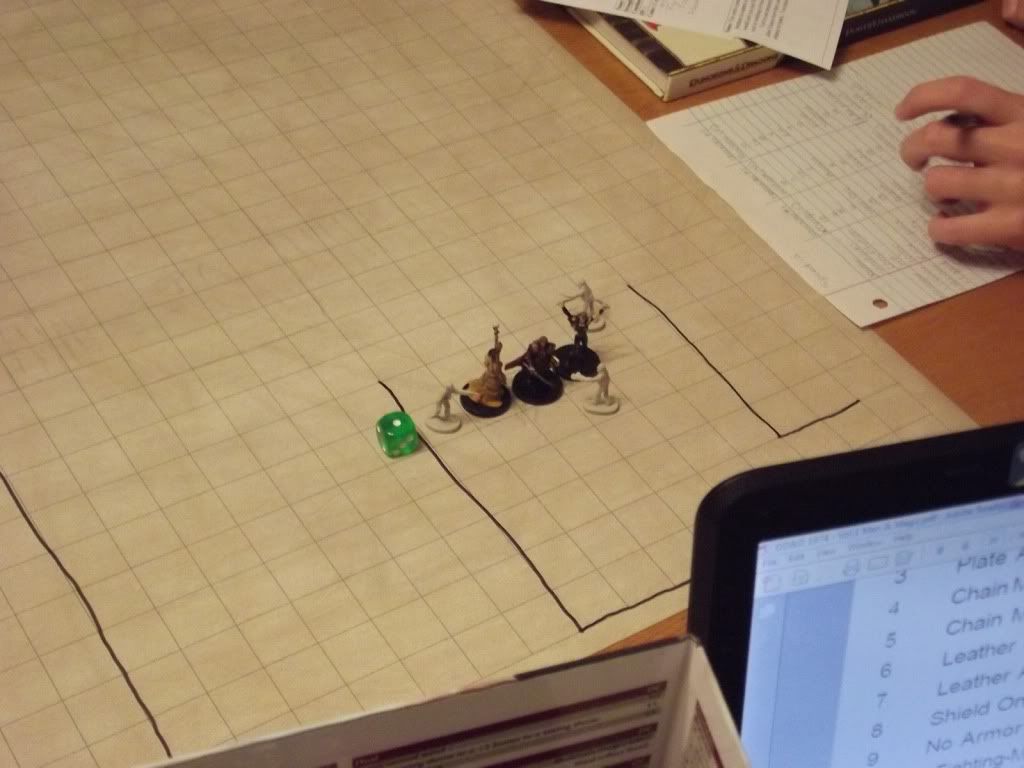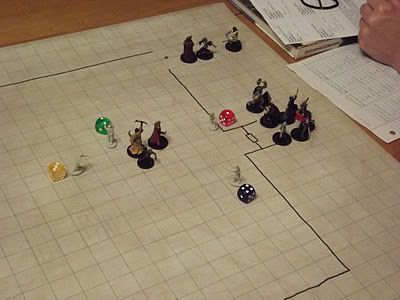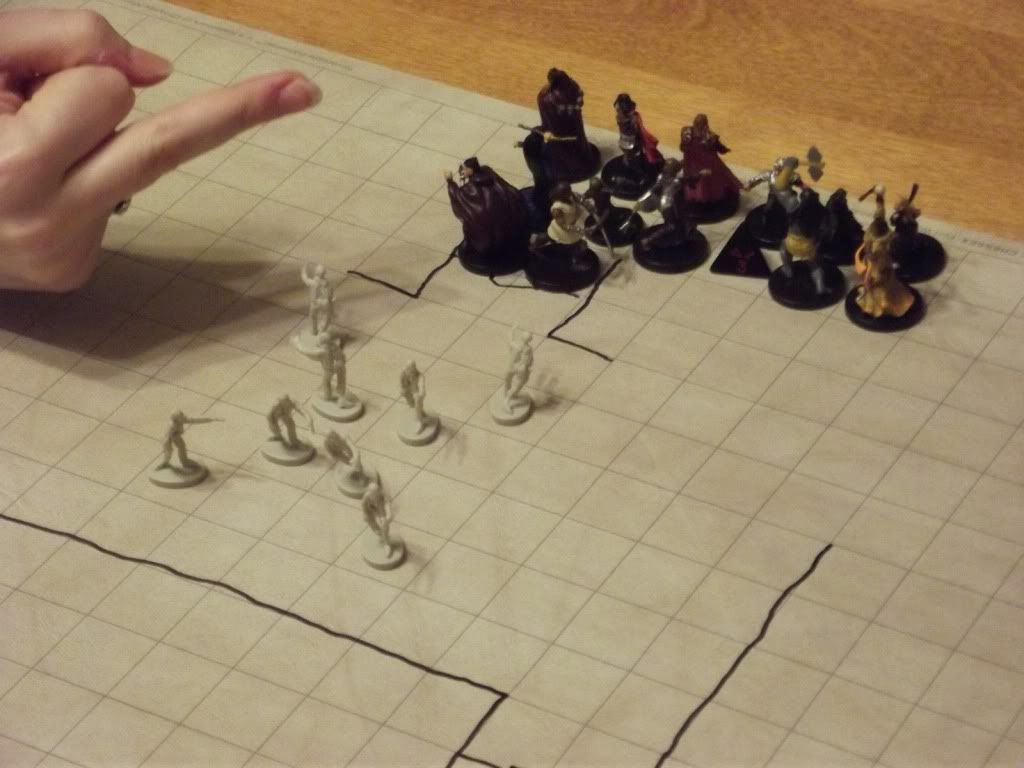An awesome piece of news: I got my copy of
Tales o' Terror: 1877 signed yesterday by
one of the authors! (He works at the local high school, oddly enough.)
When last we left our heroes, they had dinner at the house of one Mr. Carstock, railroad baron. The elderly gentleman is wheelchair bound and seems to favor only his right hand, but he is fairly jovial. His servants — all black, as fits the style of the time — are a queer lot, with protuberant eyes and slow manners. The head serving woman in particular treated the ladies very badly. But we ate and made merry, and then we went to bed and awakened with the unholy mess of Ruby O'Flahertie having eaten her own hand.
Damn.
So, Jake finally manages to convince Miss Hannity, Jeb, and David Hood to leave — largely by standing there until they finally decide to do something else. Since they felt oddly full despite the delicious smell of breakfast, Jeb went back to Miss Hannity's room, David decided to lie down for a bit, and Miss Hannity decided to go downstairs if only to be polite.
Jeb, when we left him, was talking to a black boy in the mirror. Said boy had his Bowie knife. The boy disappears from the mirror, but a rocking and rumbling starts underneath the bed — Jeb decides to grab his rifle and shoot at it. The rumbling continues and he shoots again. A hand, clutching his knife, emerges from the hole and a third shot is fired. The hand retracts and his knife is nowhere to be found.
Meanwhile, Miss Hannity goes downstairs. Everyone is seated, though the guests and their servants look despondent. Mr. Carstock and the servants ask whether the others will be joining the group for breakfast. Not knowing why everyone is acting strangely, she says that they likely will not. Mr. Carstock says that's unacceptable, and sends that head serving lady to fetch the others. With the servant's demeanor still relatively venomous, Miss Hannity suggests that Mr. Carstock ought to see after the temperment of his staff — a comment which receives an almost immediate response in the form of the pungent, telltale smell of sepsis. Initially suspecting that the question provoked Mr. Carstock to soil himself, she sniffs him to find that it is likely not he. Strangely, however, he smells of alcohol and iodine — and the quantities involved are less reminiscent of wound dressings and more indicative of corpse preservation. She further notes that one of the gentlemen guests soiled himself, apparently in response to her comment about the staff — the guests are evidently all on edge. Wanting to get to the bottom of things, she dramatically uncovers one of the dishes on the table, revealing sausage. She is contemplating her next move when gunshots sound upstairs. None of the servants move to check on things, so she decides to investigate.
Meanwhile, Father Seward and Jake discuss what must be done with Ruby O'Flahertie. They finally decide that they should just try to get her out of the house so that a doctor can see to her, and damn the possible protestations of their host. Father Seward starts walking down the hall to dress and get his stuff. He ignores the first gunshot, but starts moving toward Miss Hannity's room at the second and third shots.
Upon his arrival, he and Jeb speak through the door. Jeb explains the ghostly boy who took his knife, and Father Seward offers to help. He performs a cursory search for the boy or the knife, but only finds a partially demolished bed and holes in the floor looking into the ground level. He says he will get dressed and return, and Jeb gives him an acorn and a blessing. Father Seward thanks him, and puts the acorn in his breast pocket.
Father Seward starts shuffling back to his room. He informs Jake and Ruby O'Flahertie — despite her catatonic state — of the state of affairs with Jeb. He also informs David Hood of the same, as David was awakened by the gunshots and grabbed his own gun. Miss Hannity encounters the group and says she's leaving. David starts to pack, and Father Seward continues to his room to dress himself and grab his saddle bags.
This is where things get hazy, because events start to compound. If I recall correctly, Miss Hannity finds Jeb, learns of his predicament, and they decide to leave. They go to the front door, see the servants and Mr. Carstock sitting at the table, eating and talking amicably with the guests standing terrified in the back, where the servants previously were. They head to the stables to find Jeb's stuff and another exit, find almost no horses save one malnourished and sickly horse with a distended belly and a distended anus — Jeb puts it out of its misery. He climbs up to the loft to search for some supplies and raids some guns and such from the other guys' supplies.
Meanwhile, Father Seward returns to Ruby's room. Jake goes to get his stuff. Ruby needs to dress, so Father Seward decides to help her. Since she only has a right hand, and since Father Seward's only good hand is his right (his left is still usable, but fine manipulation is right out), trying to dress is a comedy of errors. Even moreso when Jake reenters the room.
Father Seward doesn't know this, but me as a player remembered it as soon as he appeared — Jake has the
randy Hindrance, basically marking him as an atrocious lech.
So, Jake walks into the room to find a twig of an old priest and a half-naked, vulnerable girl missing her left hand.
He is...intrigued, but manages to suppress whatever dark mutterings run through his mind. Ruby definitely notes the eyes on her, however.
Father, oblivious for the moment, asks for some assistance. Jake obliges. Father Seward notes the dynamic.
And then a girlish scream emerges from the room across the hall.
Father Seward asks if Jake can handle this while Father runs to check on David. All is agreed upon. Father Seward runs across the hall to find David Hood, grasping his face, with his bed torn apart. The priest performs a quick search of the rooms, but finds no one. David explains that a black boy started antagonizing him while packing, and then reached from the bed and bit him on the face. Sure enough, David is missing a large chunk from the left side of his face. He is bleeding heavily. Father Seward attempts to lay on hands, but again, the Lord is not in this place. Seward grabs some sheets to tear for bandages, and starts shooing David next door.
They arrive to join the awkward dressing party next door. Jake has managed to restrain himself, but it's an atrocious scene. Ruby is crying, utterly dispirited, while Jake is helping her dress. She is heard to quietly utter, "I am a married woman" — which, actually, is news to all of us, and might be relevant to a future conversation. Father Seward bandages David, and David helps finish her dressing, which neatly allows him to notice and learn about her missing hand. Packing commences quickly.
By this time, Jeb and Miss Hannity have investigated the loft. Hood, Jake, O'Flahertie, and Seward rejoin them. Explanations are exchanged about the horses and Hood's bite. Everybody climbs back down into the stables and goes to flee through the front gate.
As the group leaves the house, though, they start to feel increasingly nauseous. Somebody — Jeb, I think — breaches what appears to be the limit and immediately starts vomiting. As we approach this barrier of nausea, David and Father Seward note the presence of the well-dressed young man who appears to be ghostly. To distract David Hood from the ghostly presence, she starts bandaging his facial wounds. The ghostly man yells at Father Seward for ignoring his advice about leaving the grounds, and he wraps his fingers around the Father's neck, lifting him from the ground. He says he would rather just let the old priest die, but that their fates are intertwined. Choking, Seward pulls his pistol and fires a round into the spectre, but it does nothing other than make the creature laugh. He drops the priest and makes reference to finding a
moon jar — that Carstock is dead, and that the group is bound because they have eaten of his flesh, but a mortal agent is behind this. Find that person and break the curse to leave. The man also admonishes Seward to not get himself into these situations, that he must be at San Francisco. Father Seward asks his name, and the man says that he has no name, that Father Seward took that from him. He greets David Hood jovially when Hood notes him, and then the man leaves.
The group is about to return to the house when the serving lady emerges, stalking toward us. Father Seward pulls his gun, Jake starts shuffling cards, and everyone is poised to strike when something weird happens.
Miss Hannity lifts her skirts to reveal bandoliers of dynamite strapped to her thighs. She starts to grab one and get a match. Jake's arm flares with black lightning and he throws it — which whips around the serving lady and instead flies upward, strikes the weather vane, and causes the house to flare with purple energy. David Hood, Father Seward, and Ruby O'Flahertie all run at the sight of dynamite.
Hood, O'Flahertie, and Seward miss it as they run around the side of the house, but Jake, Jeb, and Miss Hannity witness a change as Jake falls upon the serving lady to strike with black lightning — the serving lady is briefly shown as a formless void, as though staring at her is as staring into the mouth of Hell. A flash of panic, though Jake maintains his composure, and everything is back to normal.
Presumably, all we have to do is find the moon jar to release us, though we have few details. Perhaps something is within, or perhaps we have to break it. I'm sure we'll find out, though. Meanwhile, he have hell-beasts and dynamite people to worry about.
